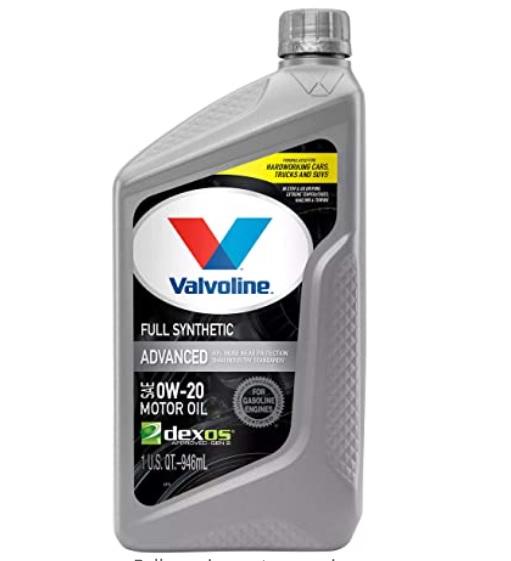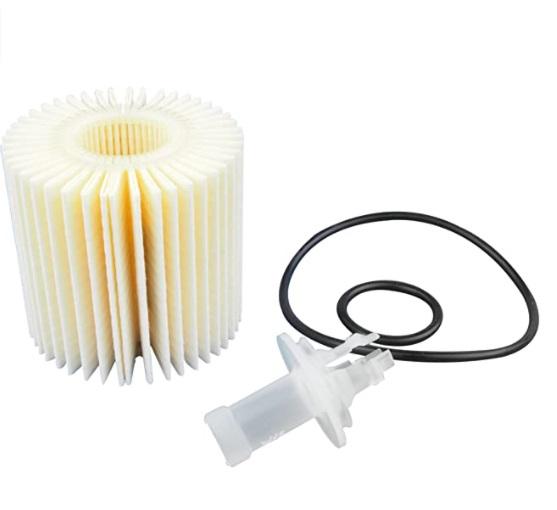Changing your car’s oil is a crucial part of vehicle maintenance. It helps maintain the engine and keep it running smoothly, as well as prolonging its life span. But how do you know when to change your Toyota Tacoma’s oil? If you want to make sure that you’re doing everything right, we’ve got all the information for changing your Tacoma’s oil here!

2017 Toyota Tacoma Oil Change Guide [hide]
2017 Toyota Tacoma Oil Type

Every vehicle has a recommended oil type and viscosity, which is based on the year and makes of your car. Your owner’s manual will tell you what kind of engine oil to use in order to keep your car running at its best performance level for an extended period of time. Changing out old motor oil with new one keeps it clean and healthy. If left unchanged over longer periods (more than six months) the dirty motor oil can clog up important parts like fuel injectors or spark plugs resulting in poor mileage, bad acceleration power, reduced fuel economy, etc.
VISCOSITY GRADE
Toyota recommends using engine oil “Toyota Genuine Motor Oil” of viscosity SAE 5W-20 or SAE 0W-20. However, SAE
0W-20 is the best choice for good fuel economy and good starting in cold weather.
CAPACITY
The oil capacity with the filter of a 2TR-FE engine is 6.2 quarts (5.9 liters), whereas, for 2GR-FKS engine, without towing package the capacity oil is 6.1 quarts (5.8 liters) but without towing package – is 6.2 quarts (5.9 liters).
SPECIFICATION OF OIL
Toyota recommends using Toyota Genuine Motor Oil in the viscosities defined above otherwise using either synthetic or conventional oil for your new 2017 Tacoma, as it can be used with both without issue. The engine of the truck uses two different grades of motor oil depending on what type you choose to use.
Toyota recommends for car 2017 Toyota Tacoma using oil next brands:
- PENNZOIL
- VALVOLINE
- MOBIL
- CASTROL
- ROYAL PURPLE
2017 Toyota Tacoma Oil Change Intervals
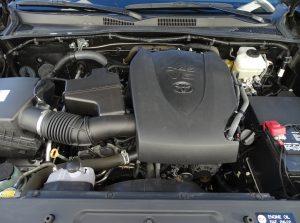
Toyota’s recommended oil change intervals for the 2017 Tacoma are every 15,000 miles. Most experts agree that you should follow your manufacturer’s recommendations to get optimal engine performance and fuel economy out of your Toyota truck.
In general, it is best to stick with the manufacturer-recommended oil change intervals for your specific vehicle. Using a higher viscosity or API grade can prolong drain intervals up to two times longer than what the factory recommends in order to offset engine wear and tear due to contaminants from internal blowby of hot gases getting past worn piston rings into the crankcase where they mix with airborne dust particles that come from normal driving conditions.
This will help protect against sludge formation which can lead to excessive oil consumption and poor performance down the line because you’ll be burning valuable fuel by forcing your combustion chamber cleaner through pistons and cylinders instead of expelling it via exhaust valves as designed in modern engines. This method does work and is very effective for those of you that need to keep your oil change intervals at maximum levels.
Best Oil for 2017 Toyota Tacoma
The engine running in your Tacoma needs a particular weight of oil to operate at its best. Using the wrong grade can result in premature wear or failure, so it is important to use what Toyota recommends for your Tacoma’s model year and condition.
Oil (By Manufacturer) – Toyota recommends using “Toyota Genuine Motor Oil” of viscosity SAE 0W-20.
Oil (Our Choice) – Valvoline Advanced Full Synthetic SAE 0W-20 Motor Oil. Aging oil in modern engines can break down and leave a critical gap in protection. But Valvoline Advanced Full Synthetic includes anti-wear additives for 40% greater protection than industry standards. Plus, the formula contains antioxidants that are 10-times more effective at preventing oil breakdown. Powerful system detergents reduce deposits on engine surfaces. Demanding weather conditions are no match for Valvoline Advanced Full Synthetic. Available everything in the formula has been engineered, tested, and proven to give the advanced machinery in your engine the crucial protection it requires.
Oil Filter (By Manufacturer) – Toyota recommends using a Toyota Genuine Oil Filter. If you are driving in dusty conditions, then an OEM oil filter can prevent contaminants from reaching the engine. A high-quality aftermarket filter may also be used if it meets or exceeds the filtration performance of the factory part and follows all recommendations provided by the vehicle manufacturer.
How to Change Oil By Yourself – Step by Step
Your car is one of the most expensive things you’ll ever buy, and it’s important to keep your vehicle running as efficiently as possible. As a result, routine oil changes are an essential part of keeping your Toyota Tacoma in great shape for years to come! Follow along with us below if you want to learn how to change the oil on the 2017 Toyota Tacoma yourself.
STEP 1: PREP
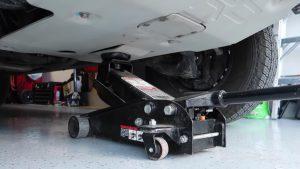
First, start by draining out old oil from your car. You’ll need an automotive jack and some sturdy ramps if your truck doesn’t have any form of front-wheel drive – this will help raise up the back end of the vehicle safely so that the wheels aren’t bearing down under their weight.
STEP 2: REMOVE THE COVER
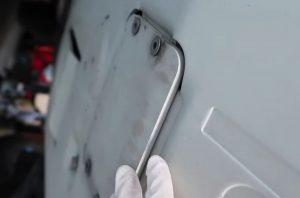
Once everything is in place, remove each of the four bolts holding down both rear access panels located underneath your vehicle until they’re loose enough to lift completely (make sure you set these aside safely so that they can be reattached to your Tacoma later). Once you’ve removed the access panels, locate and remove both the oil filter and the drain plug.
STEP 3: DRAINING THE OIL
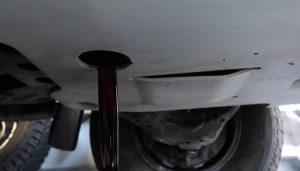
With those out of the way, it’s time to start draining! The easiest way is by placing a heavy-duty pan underneath where your old oil will pour down from – this ensures quick catchment as well as prevents any unwanted spills or messes. You’ll want to use a ratchet with an extension for this step if possible – do not try using anything else other than a wrench since bolts on engines are extremely tight and don’t have much wiggle room before becoming damaged under pressure! Once everything is in place properly, break loose (but don’t remove) the drain bolt by turning it counter-clockwise with your wrench.
Continue to feed oil from underneath your car until all of it has drained out and is safely in its pan! Make sure that no dirt or other debris finds itself mixed into old oil while draining because this could cause damage down the line.
Once everything’s done, replace the drain plug and tighten using only your fingers so that there isn’t anything extra being put on top of it (which might lead to leaks). Then reattach both access panels before moving onto the step next…but be careful when doing so because these bolts can be extremely tight!
STEP 4: REPLACE THE OIL FILTER
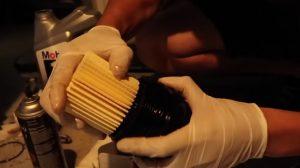
Next, remove the old oil filter. This is a little bit trickier than removing the drain plug because it involves wiggling and shaking to get all of that used-up oil out from underneath its rubber gasket before proceeding with removal. However, if you’re using an automotive jack then this part should be much easier – just place your pan right under where the new filter will sit once replaced and gently lower down on top of it until most (if not all) of the old oil has emptied out into your container below. Now use one hand to grip around each side while slowly twisting counter-clockwise until fully removed – but again, do not turn too far, or else you might damage the gasket.
Now that you’ve gotten all of those pesky steps out of the way, it’s time to put in a new oil filter! You can try using a funnel if want – but make sure that there isn’t anything preventing its rubber seal from being pressed back against your engine block once fully inserted (or else this might lead to leaks down the line).
STEP 5: PUT BACK THE DRAIN PLUG
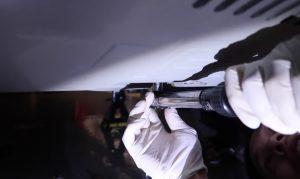
If everything looks good, go ahead and replace both access panels again before putting on your drain plug by hand first (and then tightening with only your fingers like earlier) – do not use any tools here since doing so could cause more harm than good!
STEP 6: ADD THE NEW OIL
Finally, pour clean oil into its reservoir until full, and then start up your car for another minute to help circulate the new oil throughout your engine.

The oil change is done.



